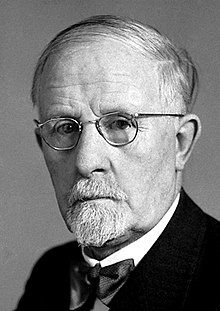Walter Rudolf Hess
| Walter Rudolf Hess | |
|---|---|
 |
|
| Born |
March 17, 1881 Frauenfeld, Switzerland |
| Died | August 12, 1973 (aged 92) Locarno, Switzerland |
| Nationality | Swiss |
| Fields | Physiology |
| Institutions | University of Zurich, ETH Zürich |
| Alma mater |
University of Zurich University of Kiel University of Berlin |
| Notable awards |
Marcel Benoist Prize (1931) Nobel Prize in Physiology or Medicine (1949) |
Walter Rudolf Hess (March 17, 1881 – August 12, 1973) was a Swiss physiologist who won the Nobel Prize in Physiology or Medicine in 1949 for mapping the areas of the brain involved in the control of internal organs. He shared the prize with Egas Moniz.
Hess was born in Frauenfeld as the second of three children to Clemens Hess and Gertrud Hess (née Fischer). His father encouraged him to pursue a scientific career and with him he conducted experiments in his physics laboratory. He started to study medicine in Lausanne in 1899 and then in Berlin, Kiel and Zurich. He received his medical degree from the University of Zürich in 1906 and trained as surgeon in Münsterlingen (in the same canton as his birthplace Frauenfeld) under Conrad Brunner (1859 - 1927). He developed a viscosimeter to measure blood viscosity and published his dissertation in 1906 titled Zum Thema Viskosität des Blutes und Herzarbeit. In 1907, he went to the University of Zurich to study under Otto Haab to be trained as an ophthalmologist and opened his own private practice in Rapperswil SG. In these years, he developed the "Hess screen", married Louise Sandmeier and in 1910 their daughter Gertrud Hess was born. In 1913 his son Rudolf Max Hess was born.
In 1912, he left his lucrative private practice as an ophthalmologist and went into research under Justus Gaule (1849 - 1939), habilitating in 1913 to become Privatdozent. His main interests were the regulation of blood flow and respiration. During the First World War he spent a year at the Physiological Institute of the University of Bonn under Max Verworn. In 1916, Gaule retired and Hess first became interim director of the Department of the Physiological Institute at the University of Zürich and in 1917 he was officially promoted to full professor and director of the institute as which he served until retirement 1951.
...
Wikipedia
